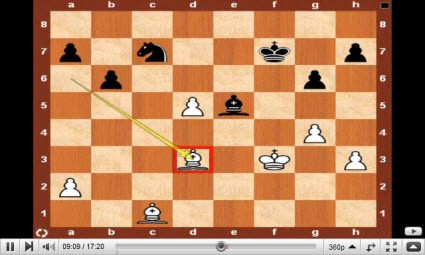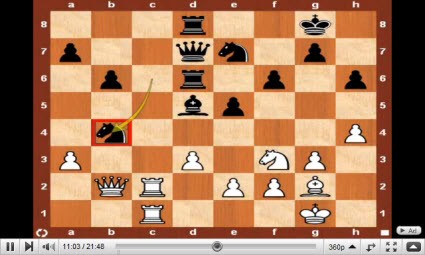It has been two decades since communism and Bulgaria parted company and few signs remain of that era.
The giant statue of Lenin in the centre of the town has been replaced by a statue of the Bulgarian symbol Saint Sofia — like Saint Kilda, a non-religious figure inspiring religious devotion.
One remnant of the old era is Kambanite — the International Bell Park for Children, located just outside Sofia in the foothills of Mount Vitosha.
Set up in 1979 as part of the Banner of Peace movement — never a big hit in Australia despite its opposition to the evil Warmongers — the park contained a bell tower plus bells from 100 countries.
The brainchild of Lyudmila Zhivkova, the daughter of long-time dictator Todor Zhivkov, tens of thousands of children were brought to the park to ring the bells and follow the motto “Unity, Creativity, Beauty”.
Now, even on a holiday weekend only a handful of families can be seen testing out the bells, half of which are stolen or broken. (The tiny bell donated by Australia in the distant past still stands but won’t ring, whereas the DDR bell, from a country long gone, works perfectly well.)
Nowadays, what rings Bulgarian bells is heavy metal — over the next two weeks AC/DC, Mettalica and Rammstein will all play Levski Stadium, and the AC/DC concert next Friday is by itself causing empty hotels to fill.
Chess has straddled the communist and post-communist eras. As proof of communism’s superiority, chess was encouraged by the State in all Warsaw pact nations and Bulgaria ranked among the top 10 nations in the world. With State support disappearing, chess has struggled in many ex-communist countries, but in Bulgaria the rise of Veselin Topalov in the 1990s to become a world class player kept chess in the public eye.
As the current contest nears its conclusion, Topalov’s fight for the world title is a lead item on the sports news in print and on Bulgarian television, which features regular live crosses to the games.
And by rights, the locals should be celebrating already.
Over the past two days, Bulgaria has been within touching distance of their first world match champion, but so far Topalov has lacked the composure to finish off the shaky World Champion and the score remains tied at 5.5-5.
Twice in three days Topalov has enjoyed a significant endgame advantage and twice Anand caused enough problems for Topalov to falter and allow Anand to escape with two draws. Even more embarrassingly for Topalov, in both games the Bulgarian was obliged to accept draw offers from Anand; something that he had declared pre-match that he would never do.
Nonetheless, a Topalov victory is both predicted and expected in Sofia. Topalov has the advantage of the white pieces first move in the final game; no player has yet won a game with black in this match.
Bulgarian television commentators recall past world title matches decided by a heroic win in the final game, interviewing Topalov’s manager who describes the twelfth and final game as the equivalent of a “golden goal” football game.
The greatest fear for the Bulgarian pundits appears to be the possibility that titleholder Viswanathan Anand will escape into rapid tiebreakers, the chess equivalent of a penalty shootout.
Anand is the most successful player at rapid chess in history, whereas memories are raw of Topalov’s failure in the 2006 world title tiebreakers against Vladimir Kramnik.
“We still have one more game to play,” said Topalov when asked about his chances should the score become 6-6. “I think only game by game.”
With just one regulation game left, the pressure is back on Topalov who will soon know whether the bells toll for him.
World Championship 2010 Game 10
White: V.Topalov
Black: V.Anand
Opening: Gruenfeld Defence
1.d4 Nf6 2.c4 g6 3.Nc3 d5
A gutsy decision, returning to the opening which had led to a massacre in game one.
4.cxd5 Nxd5 5.e4 Nxc3 6.bxc3 Bg7 7.Bc4 c5 8.Ne2 Nc6 9.Be3 0-0 10.0-0 b6!?
10…Na5 was played in the ill-fated game 1. Now 11.dxc5 Qc7 12.cxb6 axb6 is supposed to be satisfactory for Black.
11.Qd2 Bb7 12.Rac1 Rc8 13.Rfd1 cxd4 14.cxd4 Qd6!?
Provoking his opponent to push in the centre and after 20 minutes’ thought Topalov obliges.
15.d5 Na5 16.Bb5 Rxc1 17.Rxc1 Rc8 18.h3 Rxc1+ 19.Qxc1 e6 20.Nf4 exd5 21.Nxd5 f5! 22.f3 fxe4 23.fxe4 Qe5 24.Bd3 Nc6?
“A bit careless,” admitted Anand. “I shouldn’t have allowed [his next move].”
25.Ba6! Nd4?!
Taken aback, Anand fails to calculate clearly the line 25…Bxa6 26.Qxc6 Qa1+ 27.Kh2 Be5+ 28.Bf4 Bxf4+ 29.Nxf4 Qe5 which should lead to a draw.
26.Qc4! Bxd5
26…Bxa6 27.Nf6++ would be a catastrophe.
27.Qxd5+ Qxd5 28.exd5 Be5 29.Kf2 Kf7 30.Bg5 Nf5 31.g4!
“The endgame is very pleasant for me,” said Topalov and his opponent agreed, though adding “I am not sure if there is a way [for Topalov] to break through.”
Anand maintains a perfect blockade of White’s centre pawn but he has little to do while Topalov slowly builds up his position.
31…Nd6 32.Kf3 Ne8!? 33.Bc1 Nc7 34.Bd3 Bd6 35.Ke4 b5
Anand is not prepared to sit and wait, but gains as much space as he can. The risk is that White’s king will later be able to enter Black’s position but Anand keeps everything under control.
36.Kd4 a6 37.Be2 Ke7 38.Bg5+ Kd7 39.Bd2 Bg3 40.g5 Bf2+ 41.Ke5 Bg3+ 42.Ke4 Ne8 43.Bg4+ Ke7 44.Be6?!
Now Anand breaks free of his shackles. After 44.Kf3 Nd6 45.Bb4 Be5 46.Be6 Topalov could keep up the pressure.
44…Nd6+ 45.Kf3 Nc4! 46.Bc1 Bd6 47.Ke4 a5
“Once I get my queenside pawns rolling it’s quite easy,” said Anand.
48.Bg4 Ba3 49.Bxa3+ Nxa3 50.Ke5 Nc4+ 51.Kd4 Kd6 52.Be2 Na3 53.h4 Nc2+ 54.Kc3 Nb4 55.Bxb5 Nxa2+ 56.Kb3 Nb4 57.Be2 Nxd5 58.h5 Nf4 59.hxg6 hxg6 60.Bc4 Draw Agreed
World Championship 2010 Game 11
White: V.Anand
Black: V.Topalov
Opening: English
1.c4!?
A first move surprise by Anand. “I can’t recall another time when Anand played 1.c4 in a serious competition,” admitted Topalov.
1…e5 2.Nc3 Nf6 3.Nf3 Nc6 4.g3 d5 5.cxd5 Nxd5 6.Bg2 Nb6 7.0-0 Be7 8.a3 0-0 9.b4 Be6 10.d3 f6 11.Ne4 Qe8
A new idea; 11…Qd7 was normal.
12.Nc5 Bxc5 13.bxc5 Nd5 14.Bb2 Rd8 15.Qc2 Nde7 16.Rab1 Ba2 17.Rbc1 Qf7 18.Bc3 Rd7 19.Qb2 Rb8 20.Rfd1 Be6 21.Rd2 h6
Losing time, but White has nothing much to do. “I played quite solidly,” said Topalov.
22.Qb1 Nd5 23.Rb2 b6 24.cxb6 cxb6 25.Bd2 Rd6 26.Rbc2 Qd7 27.h4 Rd8 28.Qb5 Nde7 29.Qb2 Bd5 30.Bb4 Nxb4 31.axb4 Rc6 32.b5!?
Very risky; in any endgame this pawn could become weak.
32…Rxc2 33.Rxc2 Be6 34.d4 e4 35.Nd2 Qxd4 36.Nxe4?
36.Qxd4 Rxd4 37.Be4 was satisfactory for White.
36…Qxb2 37.Rxb2 Kf7 38.e3 g5! 39.hxg5 hxg5 40.f4?! gxf4 41.exf4 Rd4
The time control having been reached, Topalov now takes control of the game
42.Kf2 Nf5 43.Bf3 Bd5 44.Nd2 Bxf3 45.Nxf3 Ra4 46.g4?!
The start of some very ambitious — probably overambitious — play.
46…Nd6
46…Ne7! was stronger.
47.Kg3 Ne4+ 48.Kh4 Nd6 49.Rd2!?!
A crazy/brave pawn sacrifice by Anand when 49.Kg3 was possible. “To keep clinging on didn’t seem attractive to me,” said the Indian, yet now Anand knows that should his counter-attack fails, the game and the world title will probably be gone.
49…Nxb5 50.f5 Re4
50…Ra3 was also strong.
51.Kh5! Re3 52.Nh4! Nc3 53.Rd7+ Re7 54.Rd3 Ne4 55.Ng6 Nc5 56.Ra3!?
More bravado from Anand, when 56.Nxe7 Nxd3 57.Nc8 led to a simple draw.
56…Rd7 57.Re3
From nowhere Anand has created counterplay, with 58.Kh6! followed by 59.Nh8+ the biggest threat.
57…Kg7 58.g5 b5 59.Nf4! b4 60.g6 b3 61.Rc3!
“I wanted to play [for a win with] 61.Re8 b2 62.Rb8 but it was not enough,” said Anand who saw that 62…Rd4! would still hold the balance.
61…Rd4!
Anand was hoping for 61…b2 62.Rxc5! b1(Q) 63.Ne6+ with checkmate to follow, though he noted, “Topalov could also have played 61…Rc7 62.Nd3 Ne6! 63.Rxb3 Nd4 64.Nf4! and it’s still a draw,” said Anand
62.Rxc5
62.Ne6+ Nxe6 63.Rc7+! Nxc7 stalemate, was a prettier way to draw.
62…Rxf4 63.Rc7+ Kg8 64.Rb7 Rf3 65.Re8+ Kg7 Draw Agreed









I wish I was good at chess.